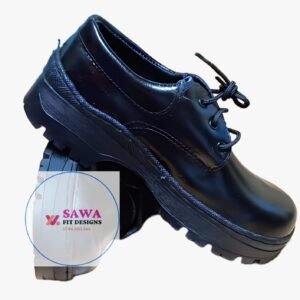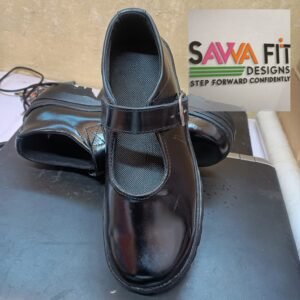Underprivileged but deserving students in Kenya
Underprivileged students in Kenya face steep barriers to education. Learn about their challenges, success stories, and how support programs create change.
-
Back to School Shoes -Genuine Pure Leather
Original price was: KSh1,300.KSh1,000Current price is: KSh1,000. Add to cart -
Boys Black School Shoes
Original price was: KSh1,500.KSh1,200Current price is: KSh1,200.Select options This product has multiple variants. The options may be chosen on the product pageClear363835373940 -
Slip-On School Shoes Boys
Original price was: KSh2,500.KSh2,000Current price is: KSh2,000.Select options This product has multiple variants. The options may be chosen on the product pageClear323436382728293031333537 -
Girls School Shoes (Buckle)
Original price was: KSh1,800.KSh1,400Current price is: KSh1,400.Select options This product has multiple variants. The options may be chosen on the product pageClear3837
Underprivileged but Deserving Students in Kenya: Challenges and Paths to Success
In Kenya, millions of students fight daily for an education they deserve but can’t easily access. These underprivileged but deserving learners—often from rural areas, urban slums, or marginalized communities—face systemic barriers like poverty, gender bias, and inadequate schools. Yet, their determination and the support of grassroots programs show that progress is possible. Here’s what you need to know about their struggles, triumphs, and how help can transform lives.
The Harsh Reality of Education in Kenya
Kenya’s education system mirrors its economic divides. While urban private schools thrive, public schools—especially in arid regions like the ASAL counties—grapple with overcrowded classrooms, untrained teachers, and outdated materials. Only 39% of 7–13-year-olds in these areas can solve basic literacy or numeracy tasks. For girls, the numbers drop further due to cultural pressures and early marriages.
Key statistics:
- 50% poverty rate: Half of Kenya’s population lives below the poverty line.
- 1.5 million children are out of school entirely due to costs.
- 90% of children with disabilities lack access to education.
Families earning less than $2 a day often choose between food and school fees. Even free primary education isn’t truly free: uniforms, supplies, and hidden costs force many to drop out.
Barriers Holding Students Back
Poverty and Resource Gaps
Many schools lack textbooks, desks, or functional bathrooms. In Nairobi’s Kibera slum, public schools are nonexistent, leaving parents reliant on underfunded informal academies. Students walk miles to overcrowded classrooms where one teacher may manage 87 pupils.
Gender Inequality
Girls miss school during menstruation due to stigma and lack of sanitary products. By high school, enrollment for girls lags 10% behind boys. Early pregnancies and domestic duties further derail their education.
Disability Stigma
Children with disabilities face isolation. Schools lack ramps, Braille materials, or teachers trained in inclusive education. Parents often hide these children, fearing community judgment.
Hidden Costs of “Free” Education
While primary school is technically free, families still pay for:
- Uniforms ($10–$20, a month’s income for many).
- Exam fees ($30–$50 annually).
- Transportation (up to $1 daily for rural students).
Success Stories: Proof That Support Works
Programs addressing these barriers have life-changing impacts. Take Margaret Danford, who grew up in poverty in rural Kenya. After repeating seventh grade because her family couldn’t afford fees, a nonprofit sponsored her secondary education. She scored a B+ in her exams, became a teacher, and is now pursuing a master’s degree.
Other wins include:
- UNICEF’s digital education kits: Providing tablets and solar-powered projectors to 100-student classes in remote areas.
- Voort-in-Kenya scholarships: Covering tuition, supplies, and mentorship for girls at risk of dropping out.
These interventions show that with resources, even the most disadvantaged students excel.
How Support Systems Make a Difference
Nonprofits and Community Programs
Local NGOs fill gaps the government can’t. They:
- Build schools in slums and arid regions.
- Train teachers in child-centered methods.
- Provide sanitary pads and mentorship for girls.
Government Initiatives
Recent efforts include:
- 100% transition policy: Moving students from primary to secondary school.
- Special needs education funds: Grants for assistive devices and teacher training.
But corruption and poor implementation limit their reach. Nonprofits often step in to ensure funds reach classrooms.
What You Can Do to Help
- Sponsor a student: $50/month covers school fees, meals, and supplies.
- Donate supplies: Books, uniforms, or menstrual products.
- Volunteer remotely: Tutor students via online platforms.
- Advocate: Pressure lawmakers to increase education budgets.
Avoid “voluntourism.” Instead, support local-led organizations with proven track records.
The Road Ahead
Kenya’s underprivileged students don’t need pity—they need opportunity. By investing in grassroots education programs, we can break cycles of poverty. As Margaret Danford says, “Education is the weapon to change your life.” For every student given a chance, entire communities benefit.
Final Word
Change starts with awareness. Share stories of these students, support ethical nonprofits, and hold leaders accountable. When we prioritize education, we build a future where every Kenyan child thrives.
-
Back to School Shoes -Genuine Pure Leather
Original price was: KSh1,300.KSh1,000Current price is: KSh1,000. Add to cart -
Boys Black School Shoes
Original price was: KSh1,500.KSh1,200Current price is: KSh1,200.Select options This product has multiple variants. The options may be chosen on the product pageClear363835373940 -
Slip-On School Shoes Boys
Original price was: KSh2,500.KSh2,000Current price is: KSh2,000.Select options This product has multiple variants. The options may be chosen on the product pageClear323436382728293031333537 -
Girls School Shoes (Buckle)
Original price was: KSh1,800.KSh1,400Current price is: KSh1,400.Select options This product has multiple variants. The options may be chosen on the product pageClear3837
Underprivileged but deserving students in Kenya



